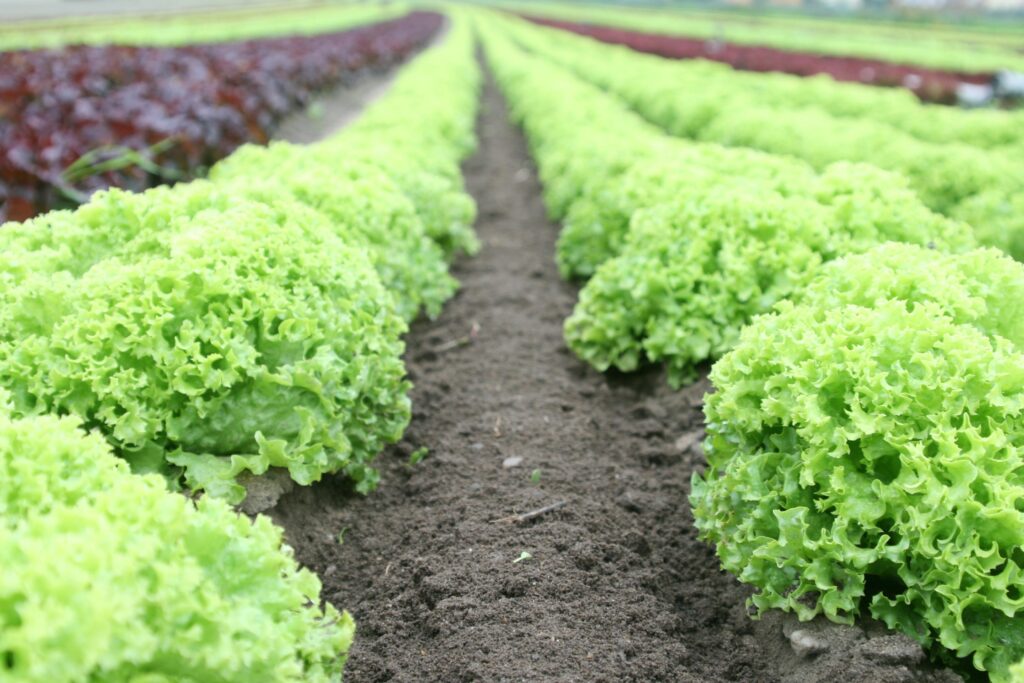
UK-based salad grower J.E. Piccaver & Co are known for their careful and progressive approach to salad and lettuce production. The team is always looking for ways to grow more efficiently. Because of this, they began working with Paul-Tech to understand how nitrogen behaves in their soils and whether they could use it more precisely.
From assumptions to evidence
The team had often wondered if their nitrogen rates could be optimised, but without direct soil data it was difficult to prove. In 2025, they decided to put that question to the test. Using Paul-Tech sensors, they monitored one of their lettuce fields throughout the growing season to observe how soil moisture and nitrogen levels changed over time.
Two Paul-Tech devices were installed in the same field — one in a biostimulant (BIO) plot and one in a non-biostimulant (NON BIO) plot. Both were on loam-to-light clay soils, and the sensors measured soilwater and nitrate dynamics at 8 cm and 20 cm depths from winter through to the end of harvest.
What the sensors revealed
Both sides started the season with similar baseline fertility. As spring progressed, the BIO plot kept slightly higher soil moisture. The NON BIO side experienced longer dry periods. These contrasting moisture conditions shaped how nitrogen behaved through the season. In wetter soil, nitrogen moved more freely through the profile. In drier soil, it stayed closer to the surface.
After the first lettuce harvest, the sensors detected significant amounts of available nitrogen remaining in the soil. Traditionally, the field would receive another application before drilling the second crop — and this time, a smaller nitrogen dose was still applied as part of standard practice.
However, the data made it clear that even before the second drilling, a substantial amount of nitrogen was already available in the soil. This amount was enough to support the next phase of growth without the need for further large applications.
A new understanding of residual nitrogen
By the time of the second harvest, the pattern was unmistakable: high levels of residual nitrogen remained in the soil, representing a valuable resource that could be better utilised by the following crop or a well-timed cover crop.
This insight confirmed what the team had long suspected. There were opportunities to grow lettuces and salads with greater nitrogen efficiency than before. Paul-Tech’s data did not just support the idea. It delivered clear, measurable evidence that allowed the team to plan with confidence.
Putting insight into action
Building on this understanding, J.E. Piccaver & Co will continue expanding their use of Paul-Tech technology in the 2026 season. The next step is a targeted trial where nitrogen inputs will be reduced by around 20%, starting with lettuce and extending to other crops such as onions.
By combining detailed soil insight with on-farm experience, the team aims to fine-tune their nitrogen strategy. Their goal is to maintain quality and yield while improving efficiency.
A partnership for progress
For J.E. Piccaver & Co, this collaboration has provided the evidence needed to make small but confident adjustments. These adjustments add up to meaningful results. The sensors have turned assumptions into measurable data. They give the team a clearer understanding of how nitrogen behaves between harvests and how it can be managed more effectively.
“We’ve always had a feeling we could use less nitrogen — now we can actually see it. The data gives us confidence to make those changes,” says the Piccaver team.
As they expand this approach to more fields and crops, the results from the first monitored lettuce site are already influencing their decisions. The data is shaping how they plan, apply and grow. It shows clearly that better data leads to better decisions, season after season.
Key insights this case study helps answer:
- What does biostimulant vs non-biostimulant data reveal about nitrogen dynamics?
- How can real-time soil data optimise nitrogen use in salad production?
- How does soil moisture influence nitrogen movement in different soil types?
- Can residual nitrogen support a second crop without additional fertiliser?
- How can nitrogen inputs be reduced by around 20% without risking yield?